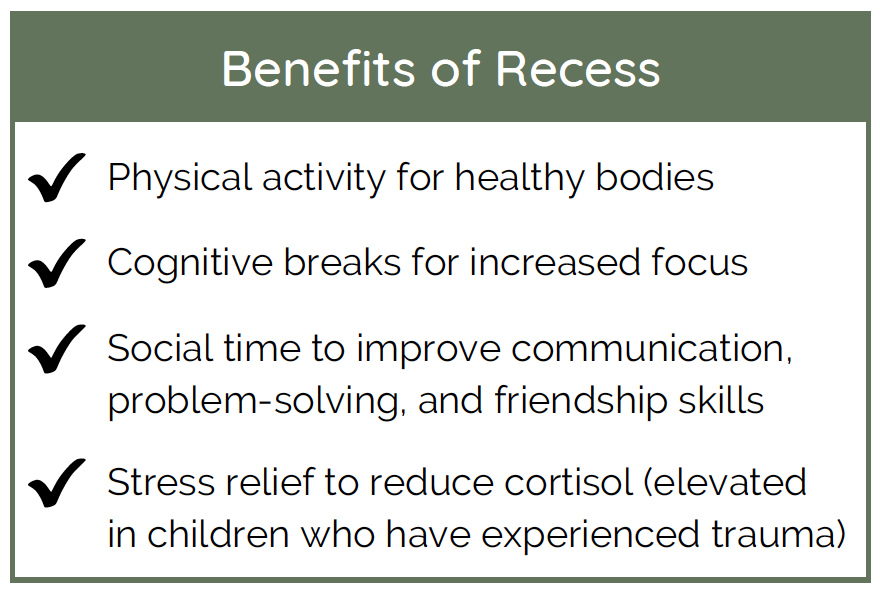Structured Recess
The American Academy of Pediatrics recommends 60 minutes of moderate to vigorous physical activity per day for all children, and states that schools should not take away recess for punitive or academic reasons. As educators of the whole child, it is our duty to provide recess.
Structured recess teaches children who show aggressive behavior to play safely in the supportive environment of a small group setting. It also ensures safety for the other children without taking away the child’s chance to play outdoors.
Why does this work?
This keeps recess safer by removing children who are using aggressive behaviors to a separate recess.
It gives students who show aggression a way to learn how to be safe with their bodies while still participating in recess.
Students who show aggression in a large group tend to have fewer challenging behaviors in a small group, which means there is a reduced need for consequences.
What happens during structured recess?
A non-teaching staff member (behavior tech, climate coordinator, social worker, administrator) takes a group of up to 6 children assigned to structured recess during the time they would typically have recess.
During recess, they spend approximately half of their time discussing the aggressive behavior that took place and why, followed by practice with the specific skill they are trying to build. The other part of the time is spent playing cooperative games where they are given directions and feedback on how to play together safely. (Menus of games can be found here or here.)
General Structure
Reflect, repair, and / or practice (13-15 minutes)
In the first day(s), students reflect through conversation or writing.
If applicable, they take steps to repair relationships or objects that were harmed.
They practice a skill that they can use next time they are in the situation.
Cooperative games (13-15 minutes)
Students play one or more games that require physical activity and collaboration to succeed (or to continue practicing a specific skill they are focused on).
Closing and next steps (2 minutes)
Students use their tracker to record their progress. If there are next steps (to repair), staff and student re-state those.
How to do this well
Enact alternative recess within the context of a responsive and predictable school-wide behavior system.
Ensure that the atmosphere is non-punitive and proactively supports children’s development of executive functioning skills.
Maintain a dynamic that is welcoming but assertive (and not designed to be more fun than recess).
Configure the master schedule to allow for non-teaching staff (behavior tech, climate coordinator, social worker) to implement structured recess when necessary.
Communicate clear expectations with families and staff.
Ensure one staff member is responsible for managing the structured recess roster.
See the Implementation Guide for planning steps & additional resources.


